Page 5

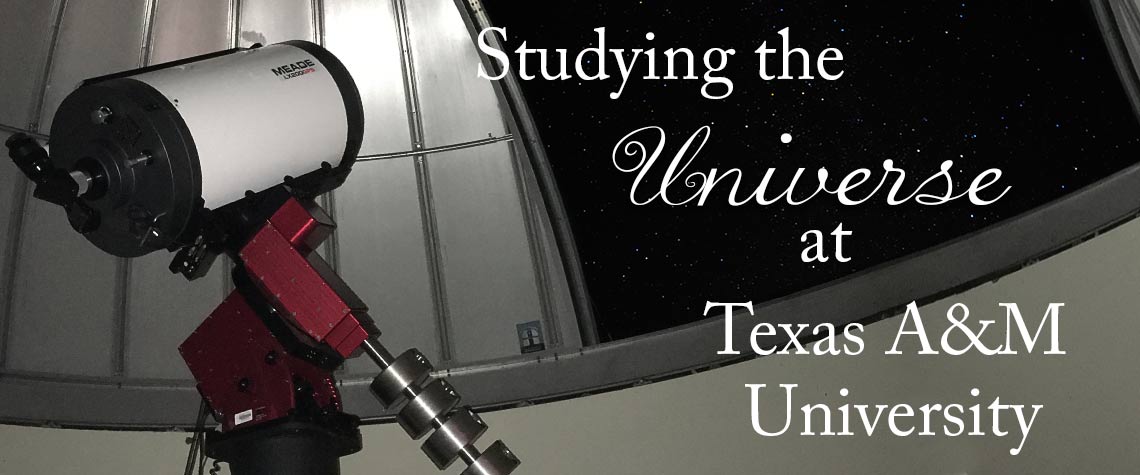
Texas A&M Astronomy and the Physics Teaching Observatory: A Brief History
By Don Carona
Texas A&M owes the beginning of its history in observational astronomy to Edward E. Vezey, who worked for both the Department of Physics and the Texas Engineering Experiment Station in the 1930-50's. By all accounts, he was a brilliant individual who was dedicated to teaching students and advancing astronomy knowledge to all. There is one document in the archives that suggests Mr. Vezey was the first, and only, staff member of Texas A&M University that was bestowed an honorary PhD for his work with students in astronomy and physics. However, not only is this against written policy since A&M's inception, it is disputed by his family. Out of respect for them, I refer to him as "Mr." without concrete evidence to the contrary.
First Informal Astronomy Instruction
Although Mr. Vezey did not teach a formal astronomy class, he is credited with organizing A&M's first informal astronomy instruction. Mr. Vezey also built the first small telescope used at A&M by students. Mr. Vezey built a mirror grinding machine in 1933 and presented it at the first Southern Convention of the A.A.V.S.O. It is known that Mr. Vezey used his grinding machine to build the mirrors for the telescope and that the telescope was used on campus through the 1940's. Unfortunately, the telescope no longer exists and no one knows when it was removed from campus nor where it is currently located. Further, there is no definitive description of the telescope and no one who ever used the telescope has ever come forward with more information.
Further history of astronomy at A&M and the predecessor to the Physics Teaching Observatory can be traced back to the early 1950's when Dr. Jack Kent taught an astronomy and a celestial mechanics course out of the Mathematics Department. Dr. Kent is solely responsible for bringing formal astronomy instruction to Texas A&M University.
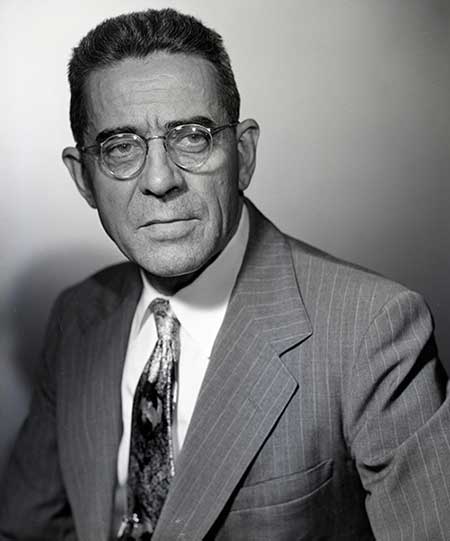
Edward E. Vezey
It is rumored that Dr. Kent used to keep a brass refracting telescope in the dome of the Academic Building and use it for his astronomy class. Faculty who knew both Mr. Vezey and Dr. Kent have stated that it was Mr. Vezey who convinced Dr. Kent that students needed to "see" the sky as well as learn the underlying mathematics and physics to astronomy. Likewise, several former faculty members have stated that they've seen the telescope; however, there is no evidence of the telescope today and its whereabouts appear to be lost forever. Both Mr. Vezey and Dr. Kent's persistence in bringing observational astronomy to students pushed boundaries that led to the creation of the Physics Teaching Observatory. It should be noted that during the time Dr. Kent was teaching astronomy in the Department of Mathematics, the Dean of the College of Science disallowed formal astronomy courses to be taught within the Department of Physics. This would change...
Program Progression
In 1968, Gilbert Plass was hired as Department Head and hired George Kattawar to assume the responsibility of teaching the astronomy course started by Dr. Kent. Dr. Kattawar continued teaching it in Mathematics until 1975, when Ronald Schorn was hired to teach astronomy. At this time, there were no observing facilities owned by the Department for an observational course. Instead, Dr. Schorn would take his students to dark skies near his home as an informal observational component to the astronomy course. The Department soon received permission from the University to begin using a section of land to teach an informal observational class. This land is where the Observatory now resides and where the first permanent structure, the student observing deck, was built. With a formal location for observational astronomy, Dr. Schorn brought Andy Young to A&M from the Jet Propulsion Laboratory in 1976 to assist with the astronomy course and help strengthen the observational component.
First Astronomy Classes at TAMU
Dr. Thomas Adair became the interim Department Head in 1978 and made the first formal request to offer astronomy courses through the Department of Physics instead of Mathematics. His request was rejected at that time, but he persisted and was granted permission in 1980 to formally offer astronomy courses. The following semester, the PHYS 306 and 307 courses were officially offered through the Department of Physics. Shortly thereafter, funding was granted by the University to build the original observatory facilities.
The First Observatory
The original facilities were designed by several members of the Physics Department at the time, but no one was able to devote a significant amount of energy to its construction. To resolve this problem, Dr. Adair hired Pat Lestrade to oversee construction of the observatory and also to teach the original PHYS 307 (Observational Astronomy) course. The purchases of the original observatory equipment consisted of: twelve, 8-inch Celestron Schmidt-Cassegrain (SCT) telescopes for students; a 14-inch Celestron SCT for use in the observatory proper; a 16.5-foot diameter Ash Dome to cover the observatory; and an Observatory Series Byers Mount to carry the 14-inch telescope. All of these items are still in use today, which is a testament to both their quality as well as the care taken to preserve these instruments. Construction was formally finalized in 1983 when all instruments and facilities were fully operational giving birth to the Physics Teaching Observatory.
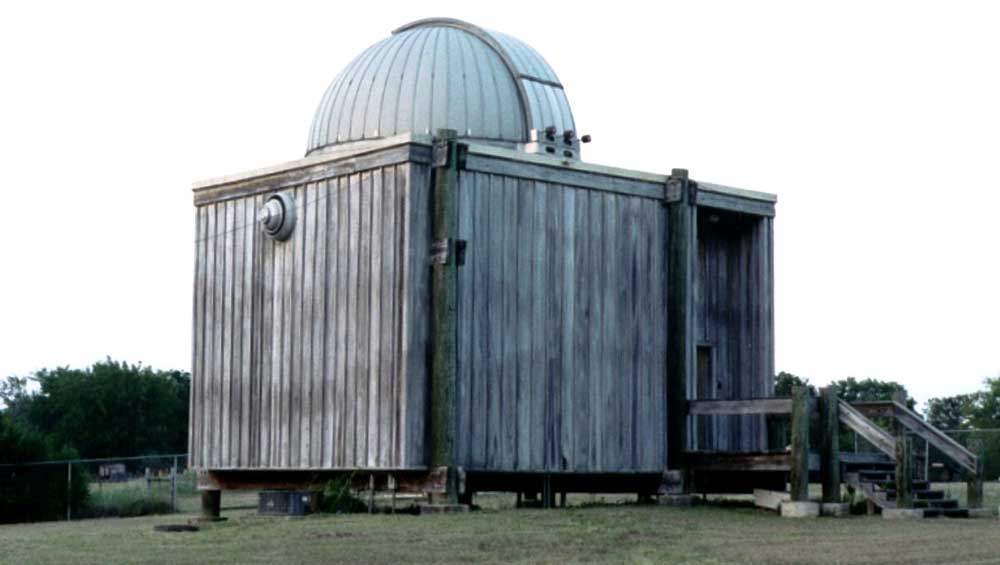
Original TAMU Observatory
A Gap in History
There is a bit of a gap in the history at this point as no one is clear on what happened. Somehow between 1983 and 1991, the observational component of the astronomy courses declined. It's most likely the result of no one taking it up when Pat Lestrade left shortly after construction of the original facilities were completed. I know the observatory proper was being used by a few graduate students during this time, but the observational course was very small and likely didn't use the observing deck for some years. Based on the fact that I found several iterations of a lab manual, I know the facilities were being used by undergraduates in the observational class (PHYS 307 at the time), but it's unclear if the deck was being used or the 14-inch in the dome.
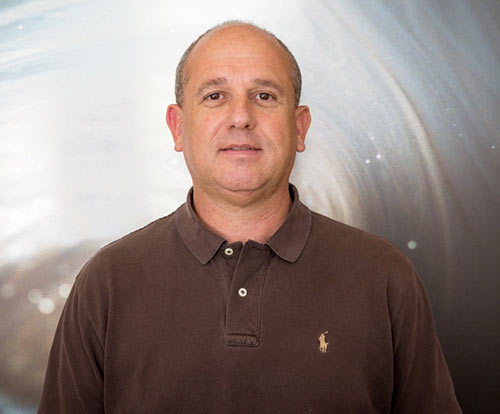
Don Carona
New Leadership
In 1991, Dr. Kattawar took Dan Bruton on as a graduate student and gave Dan the responsibility for the operation of the Observatory and coordination of the observational course. I also arrived in 1991. The first time that Dan and I arrived at the Observatory, we didn't know there was an observing deck. The grass was so tall that we only saw it when we climbed onto the roof of the observatory and looked down. The rest as they say, is history. I informally assisted Dan with the operation of the observatory. At the time, students met on campus in a small classroom to complete indoor laboratory assignments and then drove to the observatory where they completed the observational laboratory assignments.
Dan Bruton graduated in 1996 and left A&M to accept a faculty position at Stephen F. Austin State University where he continues to teach today.
I assumed full responsibility for the observatory and the observational courses following Dan Bruton's absence. When I took over, there were 24 students split over two sections. Within a couple of years, we grew that to 4 sections (Monday-Thursday) with 24 students each. The classroom used for the indoor component was becoming too small since the popularity of the observational course had grown dramatically.
I greatly broadened the scope of teaching, research and outreach programs offered at the Observatory. By 1998, I realized that the existing facilities would no longer support a growing program in observational astronomy. This is when I wrote and submitted a new facility design and program prospectus to Dr. Thomas Adair (Department Head), George Kattawar, Lewis Ford (Associate Department Head) and members of the astronomy committee. Based on several factors and the support of the College of Science, funding for new observatory facilities was allocated in 2000. Design delays and struggles with infrastructure for a modern facility prevented us from starting construction until June 2002. I signed the official documents that formally ended construction in August, 2003.
Overview of Facilities
The Physics Teaching Observatory is now identified by Texas A&M University as a fenced plot of land consisting of three major structures: The Student Observatory; the 0.5-meter Observatory; and the Student Observing Deck. However, there are two additional observatories on the site: The Rex-Hamilton observatory, which was donated and named after the two men that built the telescope and housing; and a fixed, roll-top observatory originally built by Dr. David Hyland (Cyclotron Institute) for observational experiments in stellar interferometry, but now owned and operated by the Observatory. There is also a mobile observatory purchased by Dr. Hyland that is currently under renovation and owned by the Observatory.
The Student Observatory is the primary facility and is a two-level structure with a large classroom capable of seating more than 60 people. The classroom is primarily used by students taking the observational astronomy course (ASTR 102). The student observatory also contains restrooms, water fountains, equipment and telescope storage. The observatory supports an 18-foot dome manufactured by Ash Dome, which houses an equatorially mounted Software Bisque Paramount ME that can support a variety of instrument clusters. The student observatory is the primary teaching observatory and supports student research interests and is an integral part of outreach programs.
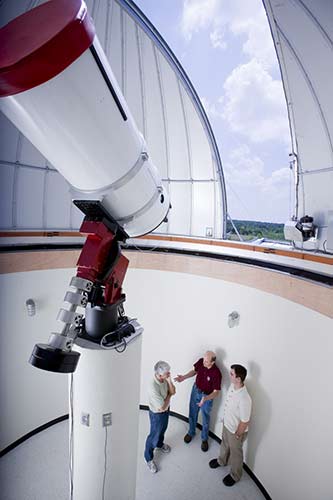
0.5-meter Observatory
The 0.5-meter Observatory is designated as a special use facility and supports student research. It is as single level structure that supports a 16.5-foot Ash Dome, which houses the Optical Guidance Systems (OGS20) 0.5 Meter Telescope atop an Astro-Physics 3600 equatorial mount. This observatory is where the majority of astronomical research is performed and is used to teach students techniques in astronomical data collection and analysis. It is currently equipped with an SBIG STX-16803 astronomical CCD camera.
The student observing deck is a wooden deck structure that supports 16 telescope piers. It is the only remaining, intact structure to survive construction of the new facilities. Students use this deck to set up several 8-inch telescopes to perform their observational laboratory assignments.
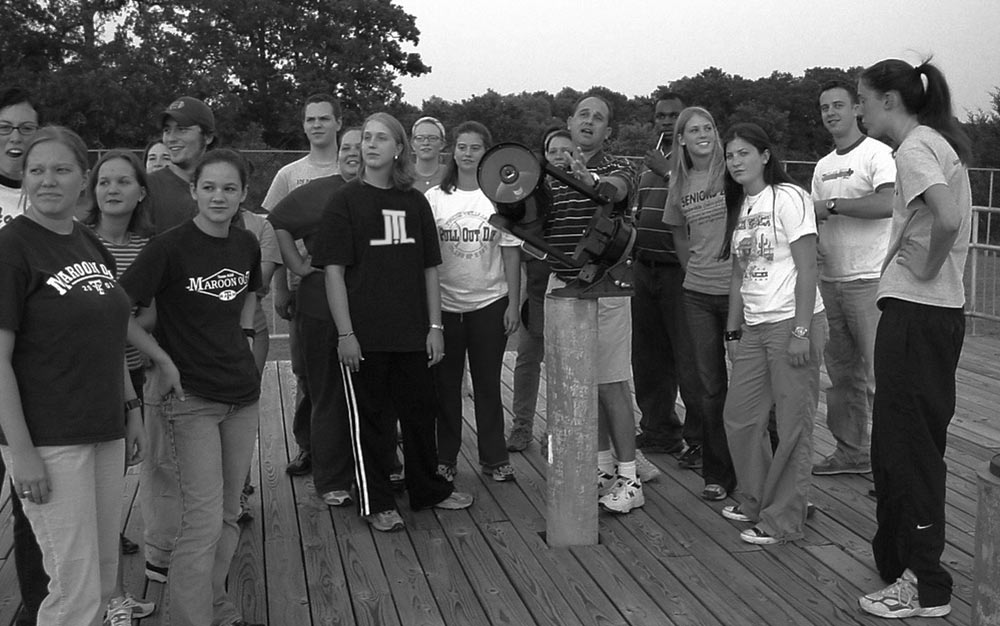
Don Carona and Students on Observing Deck
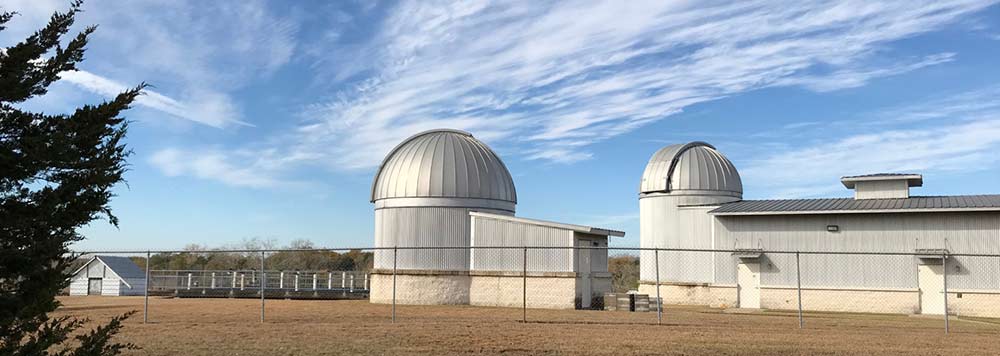
Physics Teaching Observatory Today
